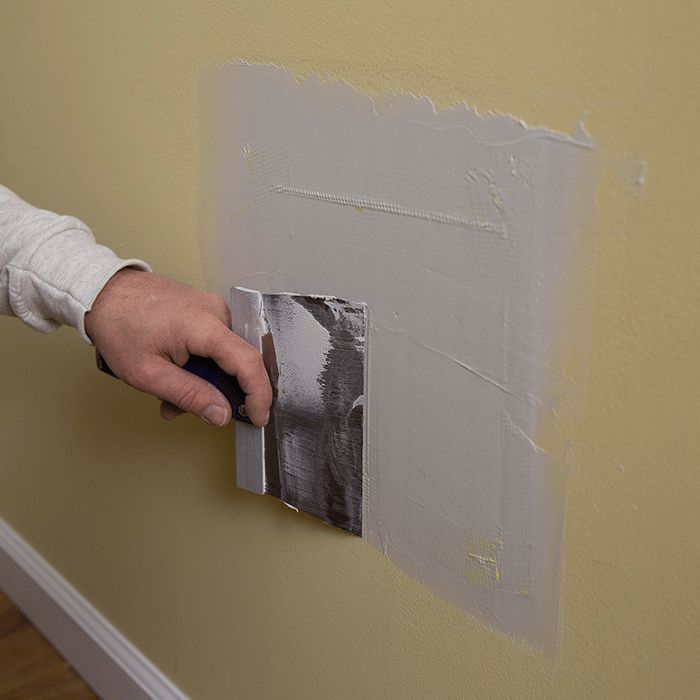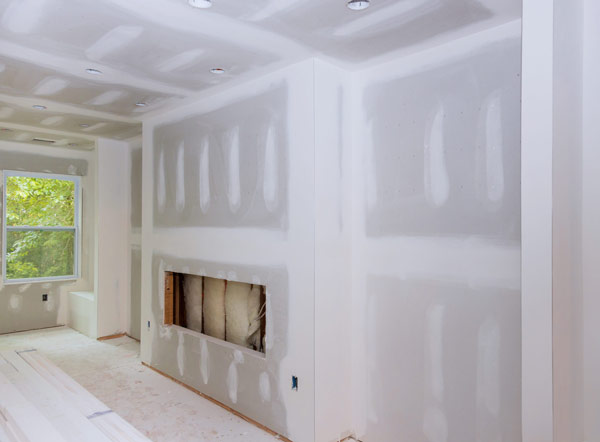A Comprehensive Overview to Mastering Drywall Repair Work and Installation
This overview supplies a detailed exploration of drywall repair and installment, satisfying both newbies and skilled specialists. It outlines necessary tools, strategies for patching and hanging sheets, and the vital completing procedures. Interior Painting. By comprehending common pitfalls, individuals can accomplish sleek results. Grasping these skills not just enhances one's home however also builds confidence in DIY ventures. What foundational suggestions will ensure a successful project from beginning to end?
Important Devices for Drywall Fixing and Installation
When starting on drywall repair service and installment, a couple of crucial tools can substantially improve the performance and top quality of the job. A drywall knife, commonly offered in numerous sizes, is vital for using joint compound and smoothing seams. A taping knife is likewise necessary for feathering edges and making certain a smooth finish. Furthermore, a drywall saw or utility blade permits precise cutting of drywall sheets to fit any type of space.
Step-by-Step Overview to Patching Holes
Patching openings in drywall is a simple procedure that can recover the wall surface's look and integrity. To begin, the location around the hole must be cleaned up and any type of loose particles removed. For small holes, an easy spackle or joint substance can be used with a putty blade. Larger holes may need a spot; a piece of drywall can be cut to fit the hole, secured with glue or screws, and after that taped around the edges. As soon as the spot is in area, joint compound is applied over the patch and feathered out to blend with the bordering wall surface. After the substance dries, sanding is essential to achieve a smooth coating. The fixed location can be primed and repainted to match the rest of the wall surface. This approach guarantees a seamless repair work, boosting the total appearance of the drywall and preserving its architectural honesty.
Techniques for Hanging Drywall Sheets
After successfully repairing holes in drywall, the following step involves hanging brand-new drywall sheets to develop a seamless surface area. To accomplish this, one have to begin by measuring the wall surface space properly and reducing the drywall sheets to fit. It is important to hang the sheets flat for much better architectural honesty, beginning from the top and functioning downwards.
Utilizing a drywall lift can simplify the process, specifically for ceiling installments. As soon as positioned, safeguarding the sheets with drywall screws at intervals of concerning 12 inches along the sides and 16 inches in the field is crucial. This assures a firm hold and decreases the risk of drooping. For corners, the sheets need to be reduced to fit well, permitting for cleaner joints. Ultimately, it is a good idea to surprise the joints in between sheets to reinforce the total framework, creating an extra durable coating ready for the following phase in the drywall installation procedure.
Finishing Touches: Insulation and Mudding
Finishing the drywall installation entails the crucial steps of mudding and taping, which assure a smooth and sleek finish. Insulation calls for the application of joint tape over the joints between drywall sheets. Drywall Repair Ogden UT. This tape can be either paper or fiberglass fit together, with each kind offering distinct advantages. After taping, the following step is mudding, where joint substance, or "mud," is put on cover the tape and load any blemishes
Utilizing a drywall blade, the compound must be spread out equally, making certain a feathered side to reduce noticeable changes. Numerous coats are commonly needed, with sanding in between each layer to achieve a seamless surface. Careful interest during this try these out process is necessary, as it significantly affects the last appearance of the wall. With the best technique and patience, the end result will certainly be a flawless foundation ready for paint or completing touches.
Common Mistakes to Avoid in Drywall Projects

Another common blunder is not allowing sufficient drying time between coats, which can catch dampness and compromise the surface. Ignoring to feather the sides properly can produce visible lines and blemishes. Ultimately, skipping sanding or using improper methods might leave harsh places. By understanding these challenges, people can greatly boost the high quality of their drywall tasks and attain a professional-looking coating.
Regularly Asked Inquiries
Can I Fix Drywall Without Professional Help?
Yes, one can repair drywall without specialist help. With the right tools, materials, and assistance, people can efficiently manage minor fixings. Nonetheless, significant damage might need specialist proficiency for perfect outcomes and toughness.
Exactly How Long Does Drywall Substance Require To Dry?
Drywall compound generally takes in between 24 to two days to completely dry completely, depending upon elements such as moisture and temperature. Thinner layers might dry out much faster, while thicker applications require even more time for optimal results.
What's the Best Kind Of Paint for Drywall?
The very best kind of paint for drywall is typically a water-based latex paint. It provides exceptional coverage, longevity, and simplicity of application, making it optimal for indoor walls while enabling easy cleanup with soap and water.

How Do I Avoid Mold on Drywall?
To stop mold on drywall, warranty appropriate ventilation, control humidity levels, utilize mold-resistant products, and quickly address any type of leaks. Routine assessments and instant remediation of water damage are likewise vital for long-term avoidance.
Is Drywall Recyclable After Elimination?
Drywall is recyclable after removal, provided it is free from impurities like mold and mildew, paint, site here or other hazardous products. Reusing facilities can refine it right into new products, advertising sustainability and decreasing landfill waste in construction.
When starting on drywall fixing and installment, a few essential devices can considerably improve the efficiency and top Discover More quality of the work. After successfully fixing holes in drywall, the following action includes hanging brand-new drywall sheets to produce a seamless surface. Completing the drywall installment includes the vital actions of taping and mudding, which assure a smooth and refined surface. Attaining a sleek finish in drywall projects can be challenging, and a number of typical blunders can weaken the quality of the job. Yes, one can repair drywall without expert help.